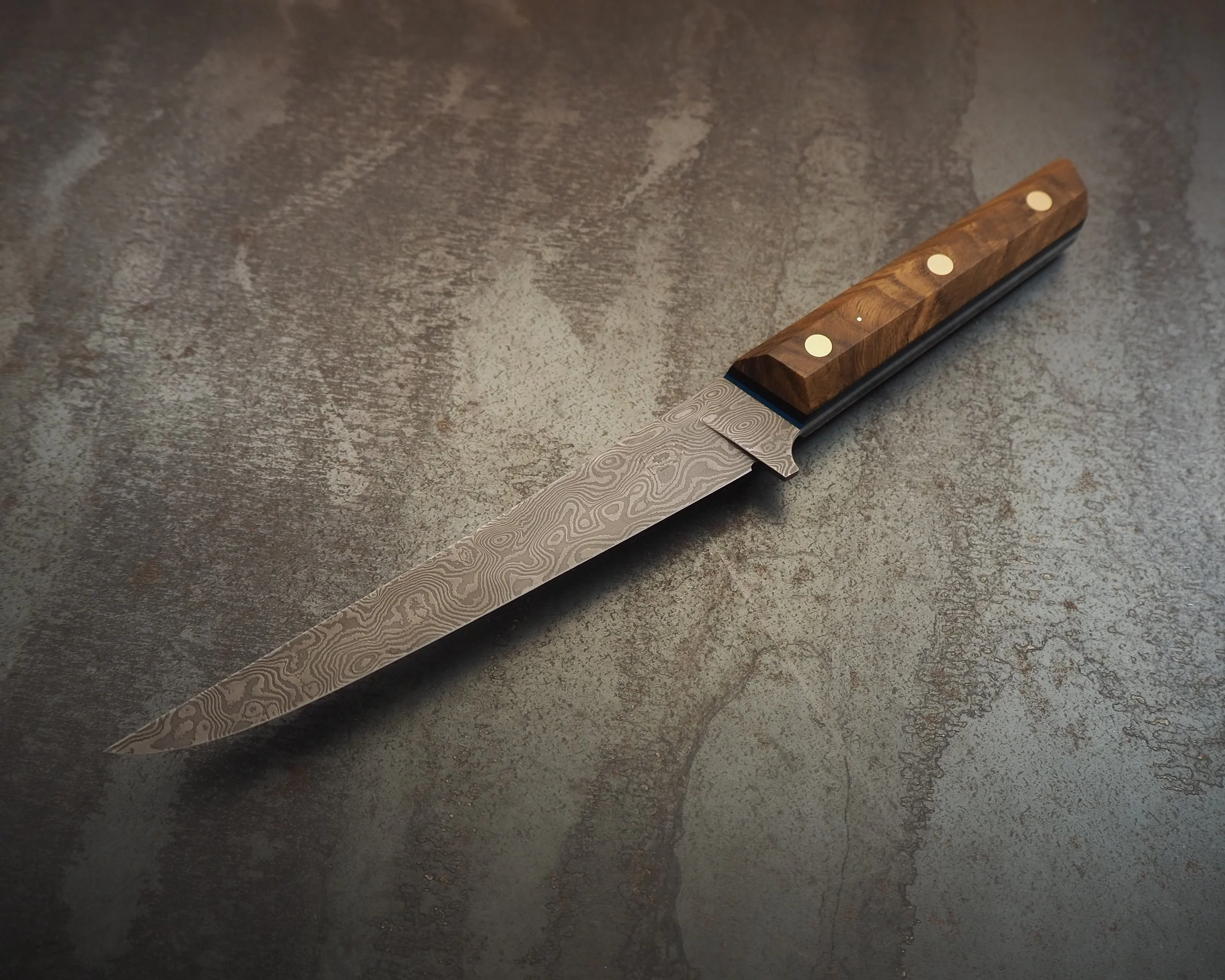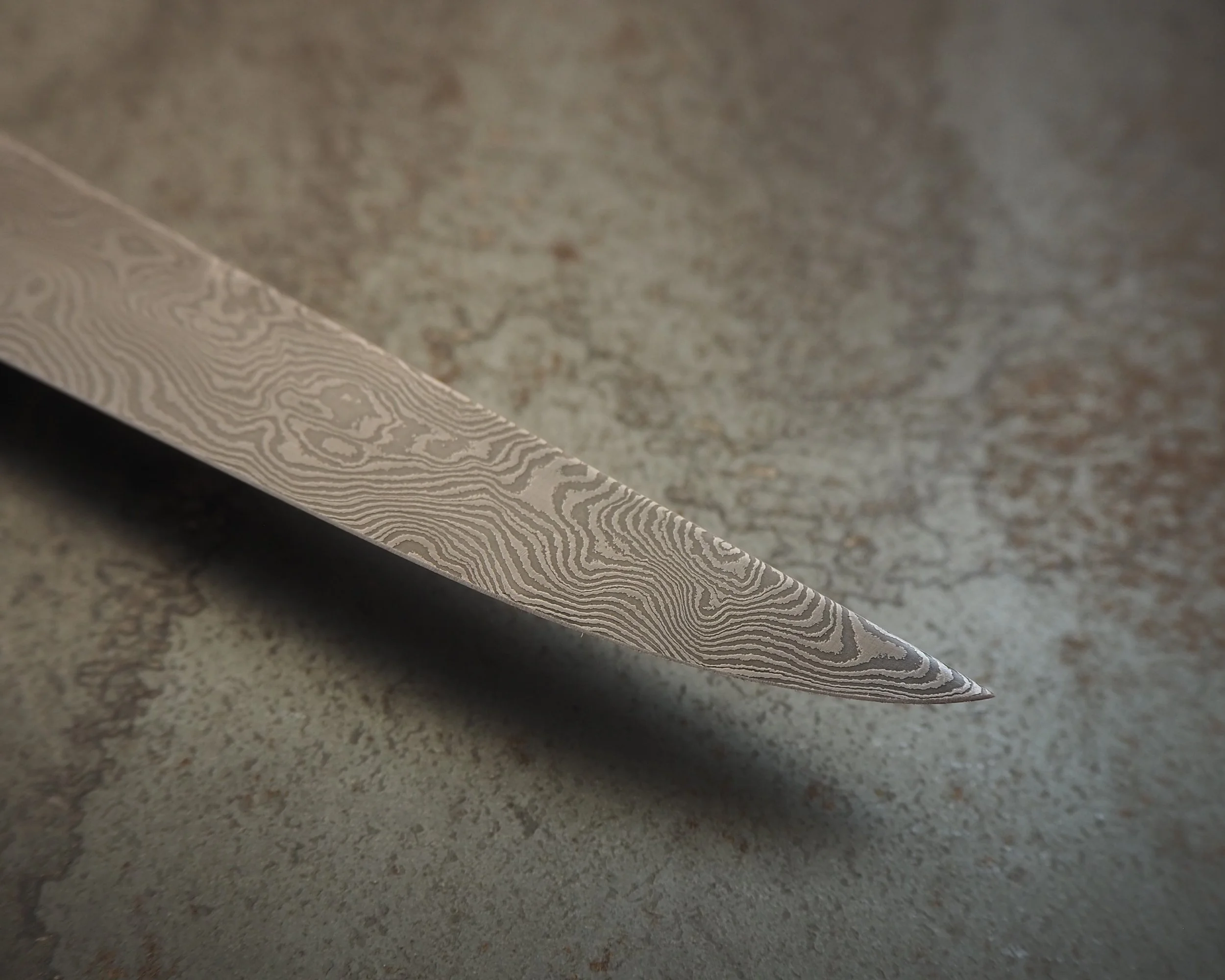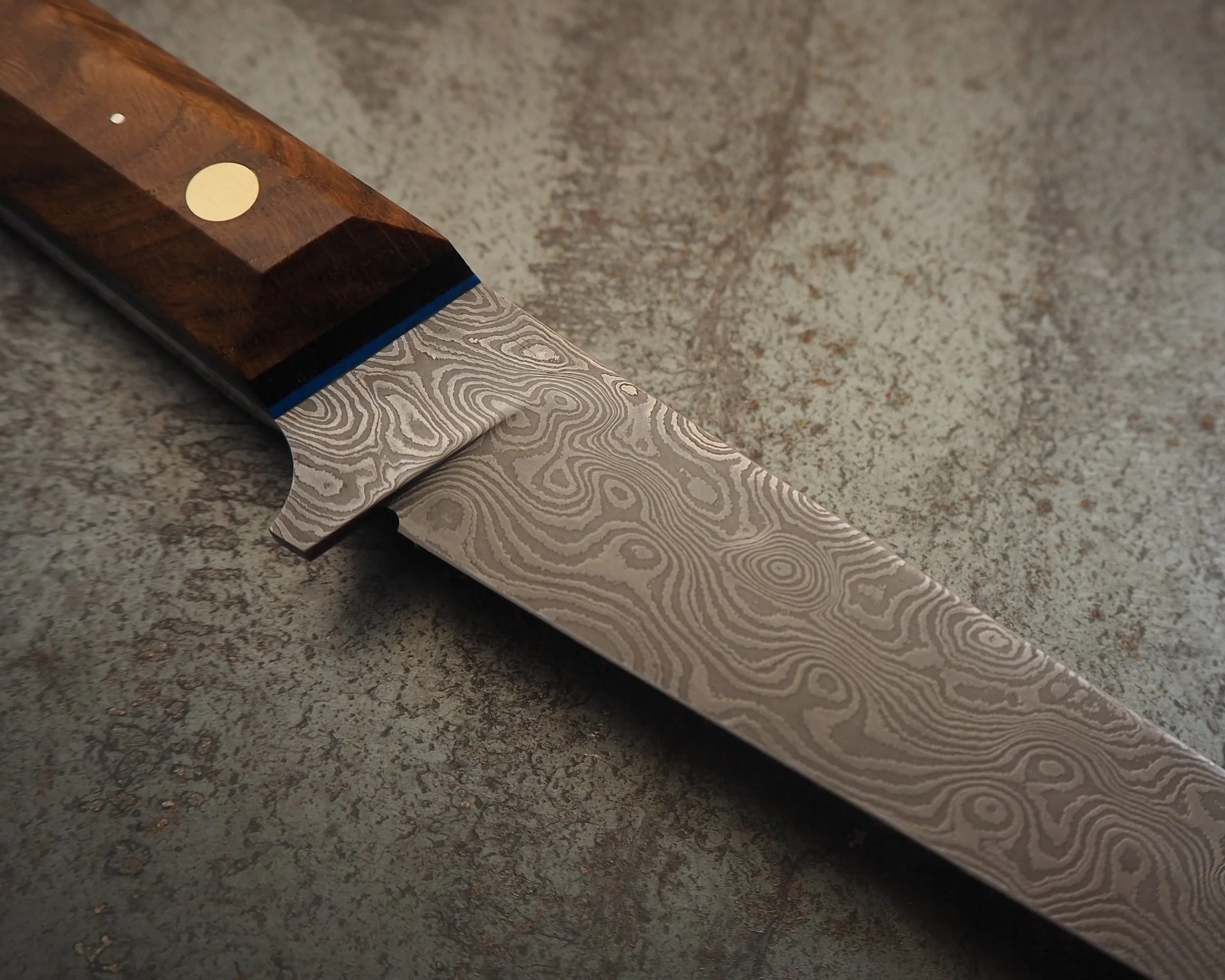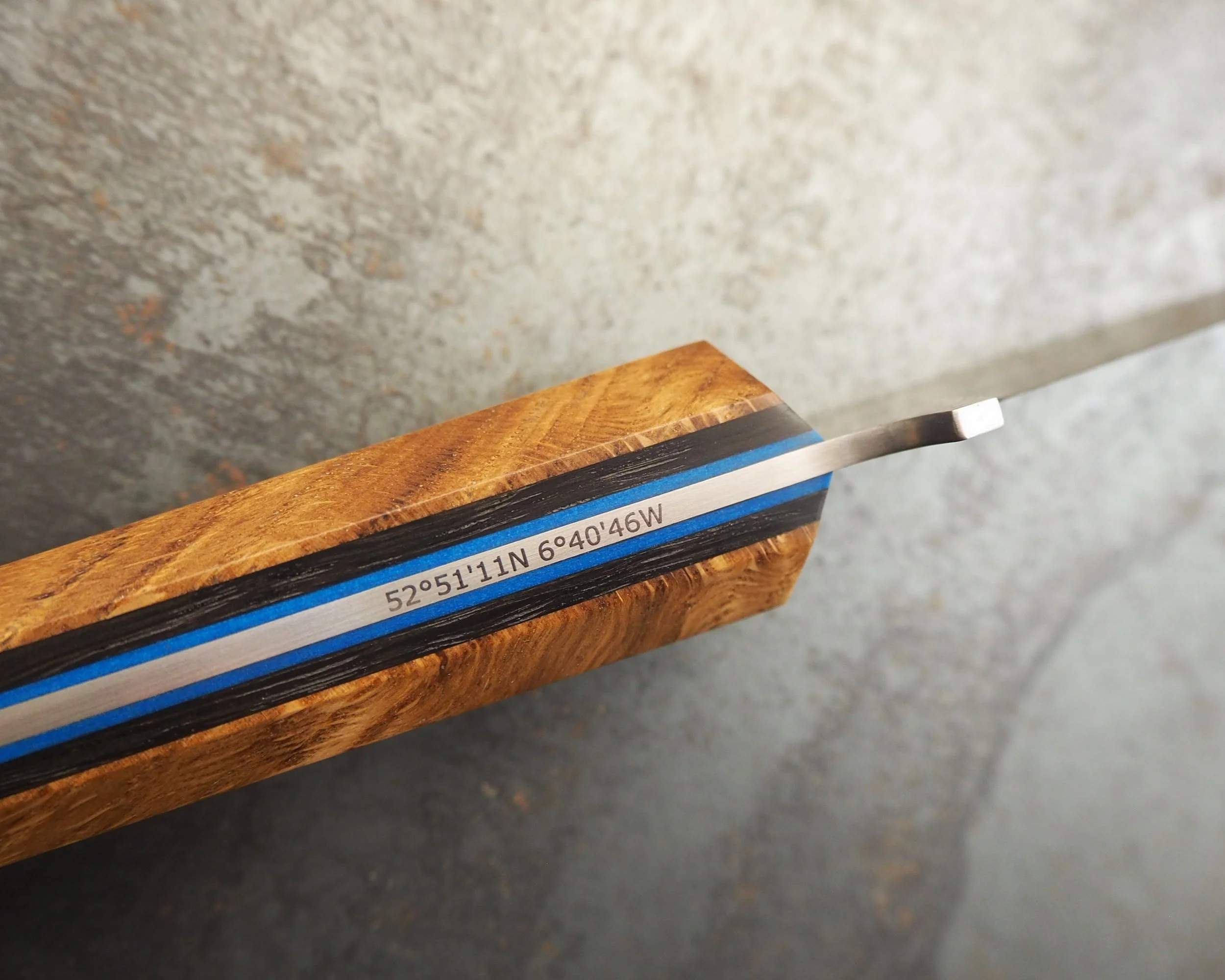Boning
The blade of this Boning knife is made of 60 layered Raindrop Damascus steel. It is formed by forge welding contrasting layers - in this case 1084 & 15N20 steels - together under immense pressure and heat, into one homogeneous billet. As this billet is cut, stacked, and forge welded again, the layer count multiplies. When the blade is ground, the different layers are revealed, with each distortion in the pattern representing a different blow of the hammer during forging.
The spine is rounded for comfort in use, and the blade has a nice rigidity to it, making it ideal for breaking down cuts of meat. The faces of the blade have been polished from edge to spine to reveal the pattern in its entirety.
The handle is made of ancient Irish Bog Oak from Glenstal Abbey and wind felled Oak from Co. Carlow, highlighted with blue Ocean plastic gathered on Coumeenoole Beach in Co. Kerry, brass, and sterling silver. It is faceted and octagonal, designed for comfort in either a hammer or dagger grip.
I love the juxtaposition of the swirling, organic pattern in the steel and frain in the wood against the clean, structured lines in the knife as a whole. Personally, I think this is my favourite knife in the edition.
Map coordinates: 52°51'11N 6°40'46W (Lisnavagh, Co. Carlow)
Blade length: 155mm
Overall length: 275mm
Weight: 123g
Balance point: At the silver pin.
The blade of this Boning knife is made of 60 layered Raindrop Damascus steel. It is formed by forge welding contrasting layers - in this case 1084 & 15N20 steels - together under immense pressure and heat, into one homogeneous billet. As this billet is cut, stacked, and forge welded again, the layer count multiplies. When the blade is ground, the different layers are revealed, with each distortion in the pattern representing a different blow of the hammer during forging.
The spine is rounded for comfort in use, and the blade has a nice rigidity to it, making it ideal for breaking down cuts of meat. The faces of the blade have been polished from edge to spine to reveal the pattern in its entirety.
The handle is made of ancient Irish Bog Oak from Glenstal Abbey and wind felled Oak from Co. Carlow, highlighted with blue Ocean plastic gathered on Coumeenoole Beach in Co. Kerry, brass, and sterling silver. It is faceted and octagonal, designed for comfort in either a hammer or dagger grip.
I love the juxtaposition of the swirling, organic pattern in the steel and frain in the wood against the clean, structured lines in the knife as a whole. Personally, I think this is my favourite knife in the edition.
Map coordinates: 52°51'11N 6°40'46W (Lisnavagh, Co. Carlow)
Blade length: 155mm
Overall length: 275mm
Weight: 123g
Balance point: At the silver pin.
The blade of this Boning knife is made of 60 layered Raindrop Damascus steel. It is formed by forge welding contrasting layers - in this case 1084 & 15N20 steels - together under immense pressure and heat, into one homogeneous billet. As this billet is cut, stacked, and forge welded again, the layer count multiplies. When the blade is ground, the different layers are revealed, with each distortion in the pattern representing a different blow of the hammer during forging.
The spine is rounded for comfort in use, and the blade has a nice rigidity to it, making it ideal for breaking down cuts of meat. The faces of the blade have been polished from edge to spine to reveal the pattern in its entirety.
The handle is made of ancient Irish Bog Oak from Glenstal Abbey and wind felled Oak from Co. Carlow, highlighted with blue Ocean plastic gathered on Coumeenoole Beach in Co. Kerry, brass, and sterling silver. It is faceted and octagonal, designed for comfort in either a hammer or dagger grip.
I love the juxtaposition of the swirling, organic pattern in the steel and frain in the wood against the clean, structured lines in the knife as a whole. Personally, I think this is my favourite knife in the edition.
Map coordinates: 52°51'11N 6°40'46W (Lisnavagh, Co. Carlow)
Blade length: 155mm
Overall length: 275mm
Weight: 123g
Balance point: At the silver pin.
It is important to mention that carbon steel blades require a little more care and maintenance than stainless steel, but you will be rewarded with a rich patina that will illustrate the knife’s history with you over a lifetime of use. Each knife comes with instructions on how to look after it.










